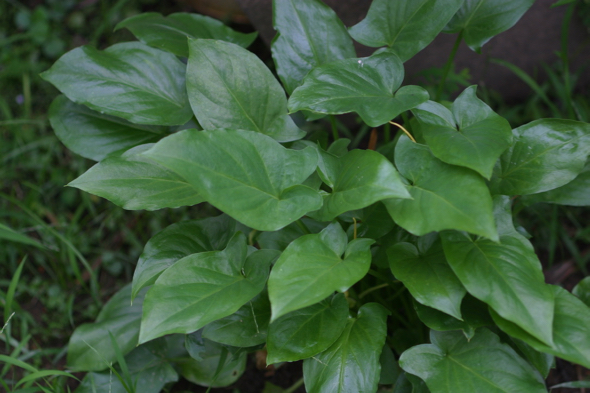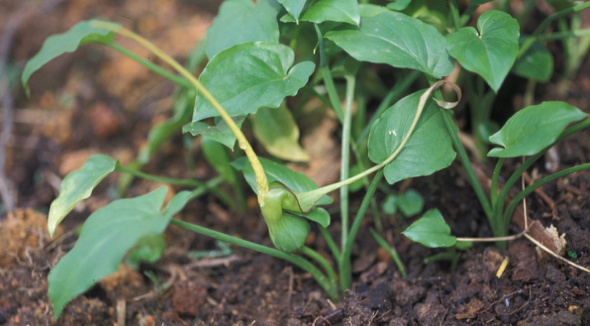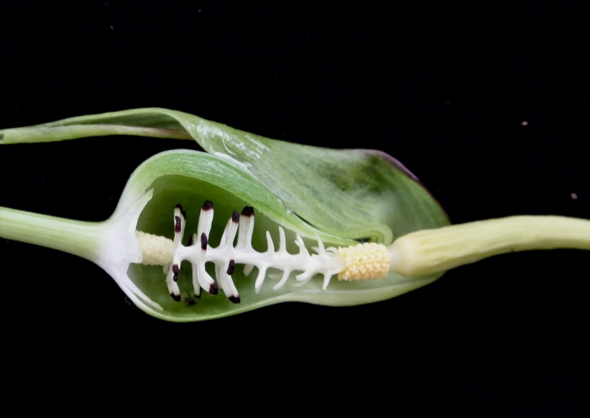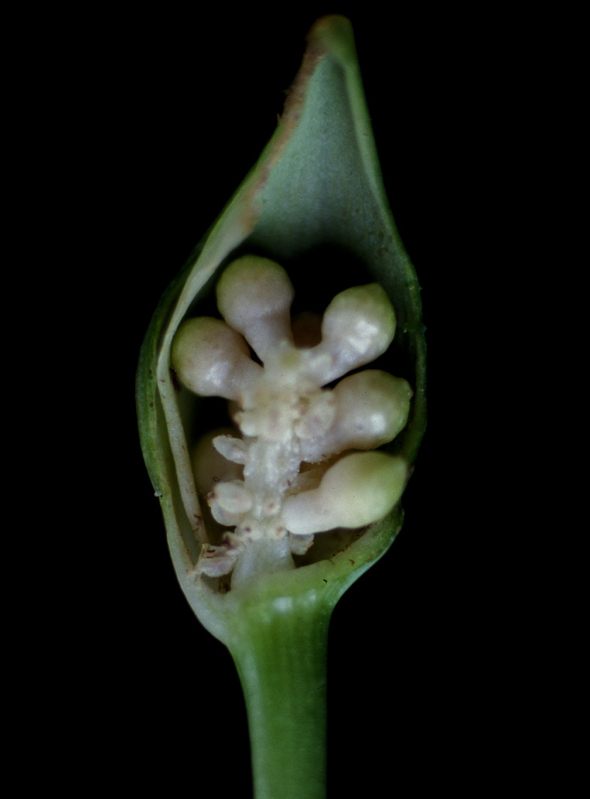Typhonium flagelliforme (formerly T. divaricatum) is commonly known as Rodent Tuber or Keladi Tikus in Malay. It is a small herb of up to 40 cm tall with leaves that are simple and borne on a long stalk (above).
The inflorescence is made up of an elongated flowering spike referred to as a spadix. This spadix is enclosed by a bract-like spathe, the base of which is expanded into a pouch enclosing the flowers (below).
With maturity the spathe detaches from the spadix (above) to allow tiny insects to enter the basal pouch where the small, unisexual flowers are found (below).
Seeds develop after the female flowers found at the base of the flowering spike are pollinated by tiny insects (below).
The herb is used in traditional medicine in Singapore and Peninsular Malaysia for the treatment of various forms of malignancy LINK. The plant came into prominence in the 1990s when a general practitioner in Malaysia successfully treated a number of his patients when Western-trained doctors considered them hopeless and incurable (Wee, 2005). Because the leaves contain calcium oxlate crystals, it was recommended that 50g of the plant juice be swallowed three times a day with the help of honey.
YC Wee
Singapore
25th November 2017
Reference:
Wee, Y.C. (2005). Plants that heal, thrill and kill. SNP Reference, Singapore. 172pp.













2 Responses
Very interesting! Is this plant native to our region and only found here?
Native to the region.